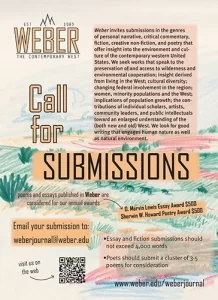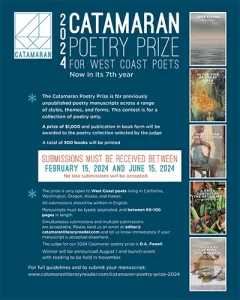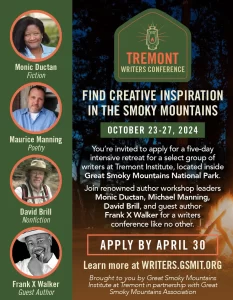Fifth Wednesday Journal – Fall 2009
Issue 5
Fall 2009
Biannual
Lynley Sharp
Fifth Wednesday Journal provides readers a wide selection of fiction and poetry, as well as photography and a nonfiction essay. The journal’s goal, “Defining literature. In real context.” is achieved in this issue by examining people in a variety of places and situations. Featured poet, Michael Van Walleghen, creates colorful and almost tangible images of different stages of his life. “The Golgotha Fun Park” reads,
Fifth Wednesday Journal provides readers a wide selection of fiction and poetry, as well as photography and a nonfiction essay. The journal’s goal, “Defining literature. In real context.” is achieved in this issue by examining people in a variety of places and situations. Featured poet, Michael Van Walleghen, creates colorful and almost tangible images of different stages of his life. “The Golgotha Fun Park” reads,
It’s hard to believe
this whole dead universe
of dizzy
fun park junk,
lying disarticulate
and rusting now
all around him
in the weeds,
was heaven once.
The choppy layout of this poem on the page completes the image he creates of his discovery of an abandoned Christ-centered fun park. An interview with Walleghen also provides us with his ideas about poetry and its functions in his life. He says, “I’m just trying to construct a coherent, interesting narrative.” His narratives allow him to explore his connection to place and time or “conflate past and present.”
Fiction in FWJ investigates our roles in society through a multitude of different pieces and places. The piece, “The End of the Road,” by Becky Eagleton, visits a Renaissance Faire in Texas where Ronnie comes to grips with the false security she has in her baby’s daddy, Spike, all while accosted by a buzzing of a bee trapped inside her car and a knickers-clad weapons vendor. She says, “I hear the bee buzzing again. A wild crazy whine. Like it’s injured. It’s whizzing around the inside of the car. Maybe it smells my Coke … C’mon bee. Here’s the way out.”
Another story, “The Sweeper” by Terry Sanville, leaves the reader wondering about the repercussions of our actions. Lucy drives a sweeper truck, and, through her silent musings in her truck, we learn about a huge absence in her married life. Stopping to notice the flood issuing from a house on her route, her actions come into question. But it makes the reader ponder, “What would you do?”
The nonfiction piece, “America’s Last Natural Man: The Story of Ishi” by Stephen Thomas, navigates a century’s old dispute between Anglo American and Native American cultures. The story is about Ishi, sole survivor of the Yana tribes of California, who descends from his hidden existence in the forests into turn-of-the-century Sacramento and ends up living in a museum in San Francisco. As the last authentic Native American, untouched by any white cultural ideas, Ishi becomes a link between his dead culture and the twentieth century.
Anthropologists’ analysis of him provides modern Americans an opportunity to reflect on their actions towards Native Americans. Ishi becomes a living museum exhibit, but he also succumbs to the comforts of the culture. This co-existence is important for Thomas because he questions white man’s perseverance in wiping out all things “other.” His discussion of Ishi’s survival relates to the cultural study done within central South America by anthropologist Claude Levi-Strauss. Levi-Strauss explains, “It must have been an extraordinary advantage to have access to communities which had never yet been the object of serious investigation and which were still quite well preserved, since their destruction had only just begun.”
The photography in this issue invites us to analyze our interactions with place through images. In the photo “Twisted,” the audience follows a sunlit spiral of branches and tree trunks into a darkened, unclear focal point. “Emelyn Story” shows a weeping angel kneeling, with her arms hanging over the tomb. The inscriptions in the marble are hard to read, but a man walking past with his head bowed strikes the viewer. What happened here? What inspired the selection of this powerful monument for this particular woman? Each of the photos invites us to question about our relation to it, an invitation extended by the journal through its poetry and prose as well.
[www.fifthwednesdayjournal.org]




